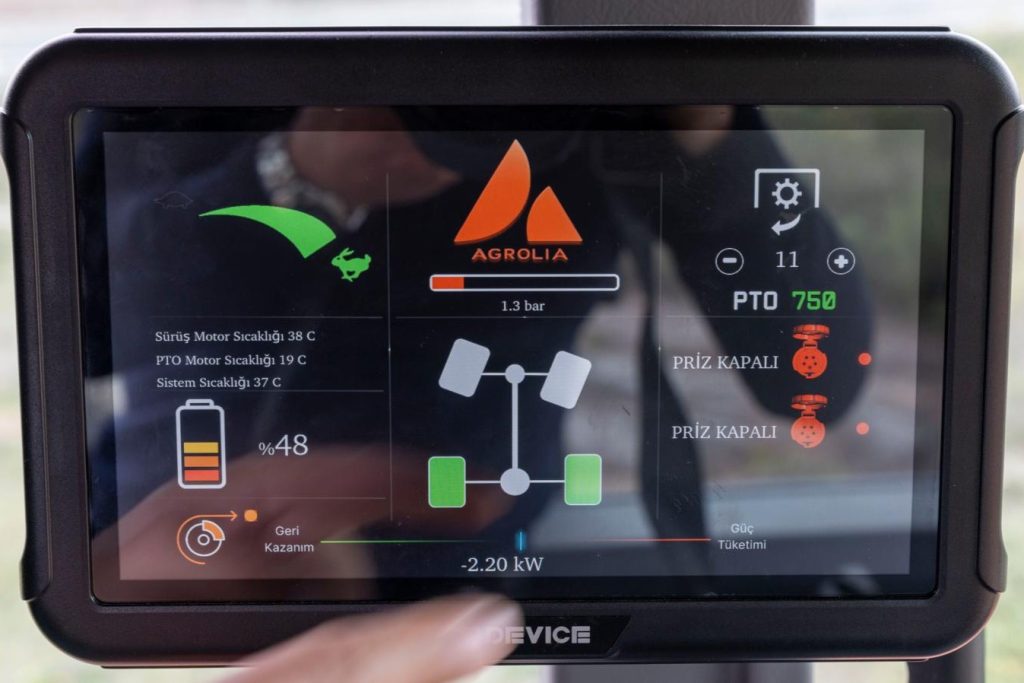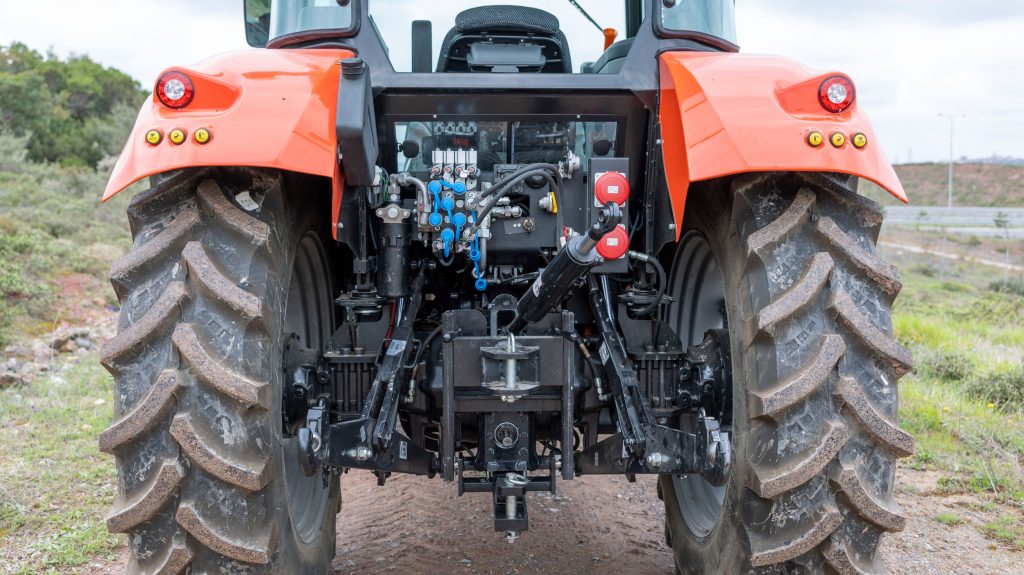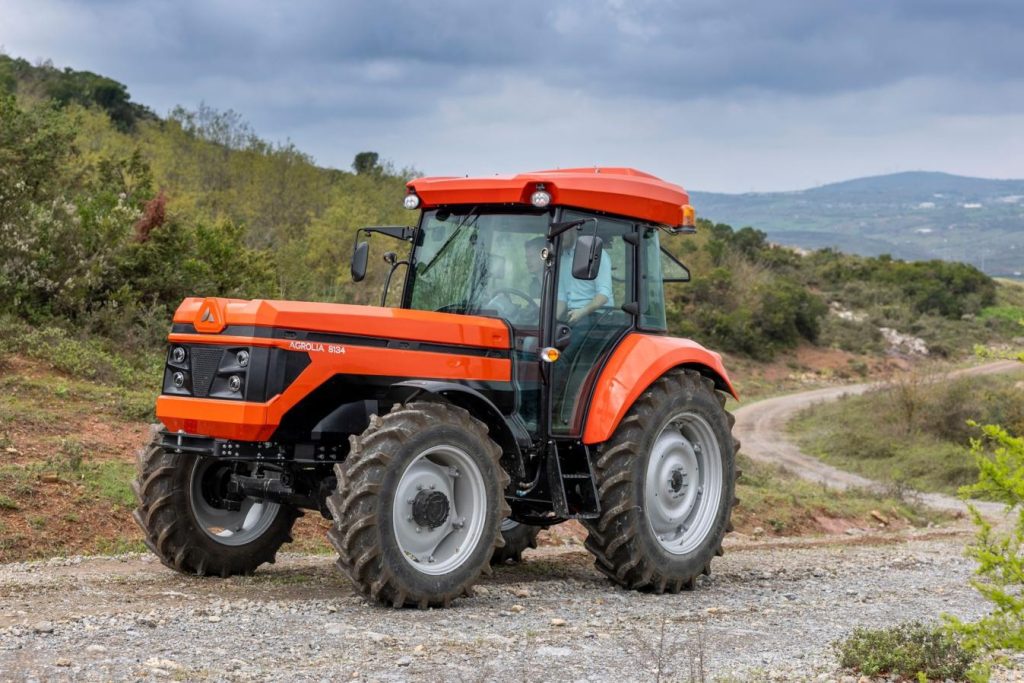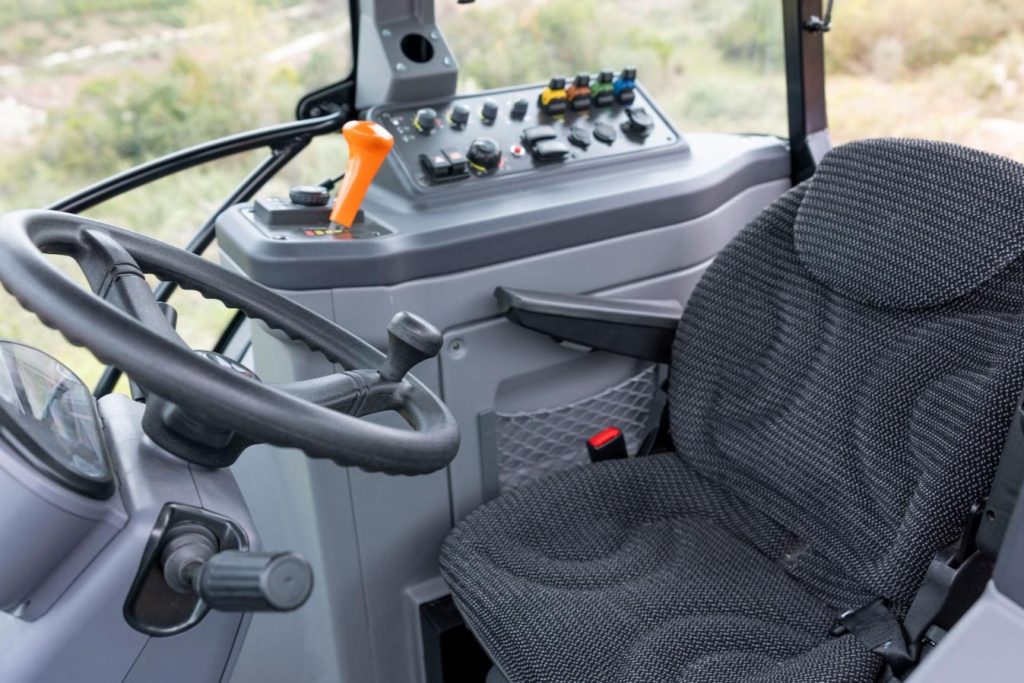This is the Agrolia electric tractor from Turkish ZY Elektrikli

Thinking big, and perhaps doing even bigger – that is the approach of Turkish engineer Önder Yol, co-owner of ZY Elektrikli. In just a few years, he developed an electric tractor: the Agrolia. And no, the Agrolia 8134 is not an electrified diesel. The entire electric drive system, the battery, and the software are all manufactured in-house.
The Turkish government wanted electric tractors. In 2017, they approached Önder Yol. This Turkish entrepreneur and engineer has extensive experience in electric vehicle technology, already building electric buses, de-icing vehicles for airports, and defence vehicles. Yol was given a retired John Deere 6620 to prove himself. In just 25 days, he electrified that tractor. Of course, it was a rush job, but the Turkish delegation saw that it worked.
Not long afterwards, a brand-new factory rose from the ground in Gebze – about an hour east of Istanbul. Half of the company is owned by Önder Yol, the other half by Ziraat Bankası, a Turkish state bank. The manufacturer’s name, ZY Elektrikli, is a combination of the two. The first tractor is the Agrolia 8134. The Turkish team proudly points out that the tractor already has EU Type Approval, meeting technical safety requirements.
In-house production
ZY Elektrikli aims to build as many components in-house or source them locally as possible, to avoid reliance on suppliers. The chassis, axles, cab, electric motors, and circuit boards, for example, are partly designed in-house and sourced accordingly.

Often, an electric vehicle manufacturer receives complete batteries from suppliers. At ZY, this is not the case: raw cells arrive from China and are assembled into batteries on site. The tractor operates on a 760 to 800 volt system.
Battery management is also developed by Yol. He started with a 45 kWh battery, which soon grew in stages to the current 170 kWh unit. The Turkish builder already has plans for a 350 kWh version.

Potential for 1,500 hp
The tractor houses 3 electric motors. Each can potentially deliver 500 hp, 1,500 hp in total. All 3 are limited: the first is capped at 160 hp and drives the wheels via a standard Hema rear axle.
The PTO is driven with 180 hp. The behaviour simulates that of a diesel tractor: engagement is not abrupt, you can choose from the ‘standard’ speeds plus ±50 rpm, and the stub can still be turned by hand. The third electric motor is limited to 40 hp and drives the hydraulic pump, air conditioning pump, and a compressor. At the rear are two 380-volt power sockets.

The motors are cooled with a special dielectric coolant from Mivolt, which does not conduct electricity, dissipates heat well, and is non-corrosive. Yol found that a tractor cooling system has different demands compared with electric cars: “When ploughing, you have constant, heavy load – comparable to a car continuously driving uphill,” he explains. Yol.
“Often, electric vehicles have multiple ECUs – one for the motor, two for the batteries – with the manufacturer making them communicate. We do it differently. Because we make so much ourselves, we can work with a single central ECU. The whole system communicates, exchanging 4,800 messages per second with the ECU, essentially checking every 3 microseconds if everything is OK,” says Yol.

Highly electric
The Agrolia has a somewhat rugged stance, due to the long, flat bonnet and the simple cab mounted on 420/85 R38 tyres – small by Dutch standards, but normal in Turkey. Unlike many diesel tractors, where the engine and transmission housing act as the chassis, the Agrolia uses a wide steel chassis as its base, with two electric motors mounted side-by-side within it.
The cab is basic, with mainly hard plastic panels and a view over the wide, long bonnet. There is no clutch pedal, only brake and drive pedals. An F/R shuttle under the steering wheel selects direction; you can accelerate either with the pedal or by selecting lever mode, where pushing the orange lever forward increases speed.

In some ways, the operation is modern: there is stepless drive, four electronic spool valves, electronic PTO engagement, and electronic linkage control with fender-mounted buttons.
However, cost savings are evident: no front axle suspension, no cab suspension, no passenger seat, and no ability to change travel direction with the right hand from the drive lever. A redesign is under consideration, with a more sloping bonnet for a moder
Auteur: Bob Karsten